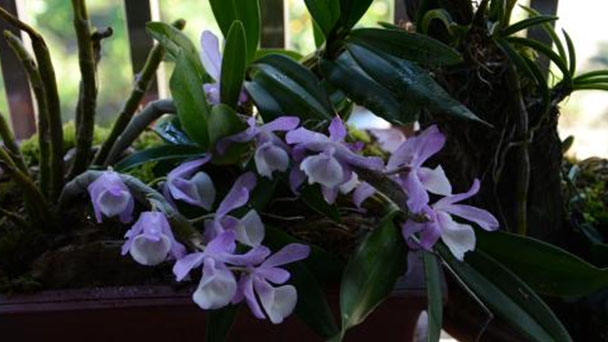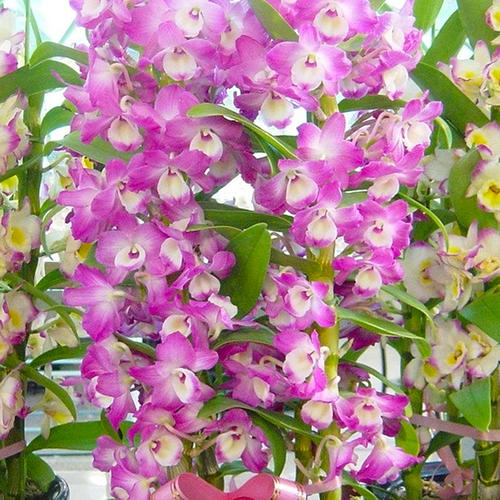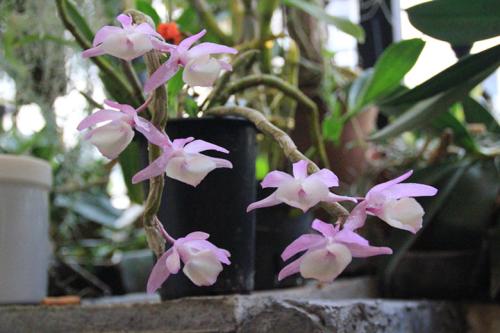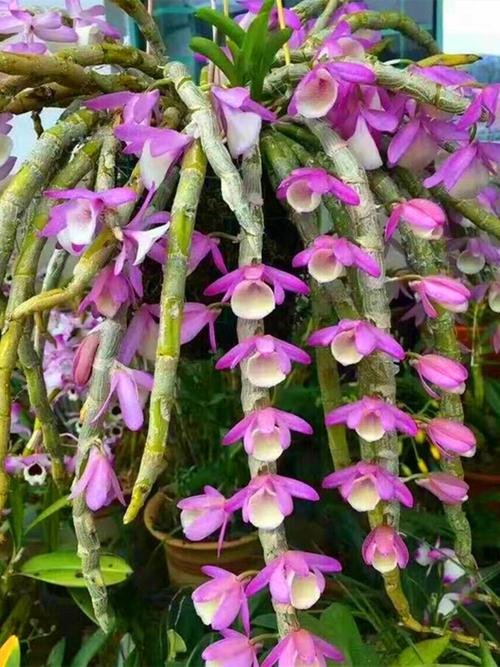Dendrobium primulinum profile
Written by Maggie
Jan 15 2021

Originating in the south and southeast of Yunnan, Dendrobium dendrobium was born in the mountains of 700 ~ 1800m above sea level, India, Nepal, Bhutan, Myanmar, Thailand, Laos and Vietnam also have distribution.The flowers of Dendrobium dendrobium are very fragrant, and it is an excellent germplasm resource of Dendrobium dendrobium.
Dendrobium dendrobium picture

Dendrobium dendrobium distribution
Dendrobium dendrobium is distributed in Longling, Zhenkang, Simao, Menghai, Mengla, Wenshan; Dendrobium dendrobium is attached to the elevation of 700-1800 m mountain sparse forest on the trunk.NW India, Nepal, Sikkim, NE India, Myanmar, Thailand, Laos, Vietnam.
Dendrobium dendrobium growth Habits:
Dendrobium is a kind of like a cool primulinum perennial herbaceous plants, in the warm, wet, at more than 1000 mm annual rainfall, semi-shade environment, the average temperature in January 8 ℃ higher than the growth in subtropical mountains for beautiful, suitable growth temperature of 15 to 28 degrees. Dendrobium dendrobium is suitable for growth of air humidity of 60% above, not very strict with techniques namely, wild in loose and thick bark or more trunk growth, and some also grown in the cleft. Dendrobium dendrobium has a pneumatic rooting system, the main requirements of the root permeability is good, the use of the best matrix can be ventilated air filter water, in the appropriate temperature and humidity, fast growth, survivability is very strong. Late spring and early summer each year, biennial stem on the upper section of the inflorescence out, after flowering from the stem base grow a new bud development into the stem, autumn and winter season into dormant state.
The morphology of Dendrobium primulinum
Dendrobium dendrobium is pendulous, fleshy, cylindrical, usually 20 -- 35 cm long, 8 -- 13 mm thick, unbranched, with many nodes, and internodes 2 -- 2.5 cm long. Leaves are papery, diallel, alternate on entire stem, lanceolate or ovate-lanceolate, 8 -- 10.5 cm long, 2 -- 3 cm wide, apex obtuse and equilateral 2-lobed, with papery or membranous leaf sheaths at base.
Racemes are with 1-3 flowers, usually emanating from upper nodes of old stems that have fallen leaves; Inflorescences stem nodes navicular concave, 2 mm long, base covered with 3-4 membranous sheaths 2 -- 3 mm long; Bracts are pale white, membranous, ovate, 5 -- 9 mm long, apex obtuse; Pedicels and ovaries are yellow-green, 2-2.5 cm long; Flowers are spreading, pendulous, sepals and petals pale rose; Middle sepals are narrowly lanceolate, 3 cm long, 6 -- 8 mm wide, apex subacute, with 3 -- 5 veins; Lateral sepals are homomorphic to middle sepals, apex subacute, base askew, with 3-5 veins; Calyx sac is narrowly conical, ca. 5 mm long, terminal obtuse.

Dendrobium dendrobium growing method:
According to its growth habits, Dendrobium cultivation sites should be selected in a semi-shade environment, with air humidity above 80% and winter temperature above 0℃. Artificial controllable environment can also be, tree species should be HuangFicus, Pear, thick bark tree, camphor tree and so on and should be thick bark with longitudinal groove, water content, leafy branches, thick tree trunk live tree, stone ground should also be in the cool, moist area, hanging plate kind, tied to the tree look good.
Temperature management:
Newly transplanted tissue culture seedlings are very sensitive to water, and lack of water will lead to slow growth, dry, and low survival rate.However, too much spray will lead to waterlogging and rot root, and it is easy to cause large-scale occurrence of soft rot disease when temperature and humidity are high. Within a week after transplanting (seedlings have not yet produced new roots) air humidity should be maintained at about 90%, a week later, Dendrobium dendrobium begins to produce new roots, air humidity can be maintained at 70%-80%. Planting beds dry and wet potential is conducive to long roots and buds. Avoid strong light, spring and autumn visible sunshine in the morning, winter can be placed in sufficient light, other times in a bright scattering of light and ventilated place. The overwintering temperature can be kept at 8-10℃
Fertilization management:
Because Dendrobium dendrobium is aerial root, it is necessary to spray suitable foliar fertilizer as a nutrient solution, in order to supply sufficient nutrients to the plant, and promote early roots and sprouts. Foliar fertilizer can choose potassium nitrate, potassium dihydrogen phosphate, humic acid, as well as imported ternary compound fertilizer and diluted MS medium. In general, one week after transplanting, the plant began to spray 1/1000 of potassium nitrate or potassium dihydrogen phosphate after the occurrence of new roots, 7-10 days of spraying once, continuous spraying 3 times. Spray 3‰ ternary compound fertilizer every 10-15 days after the growth of new buds.
Ornamental value of Dendrobium dendrobium
The Dendrobium dendrobium ornamental value is extremely high. The flower appearance is elegant, the exquisite lovely, the color is bright, the smell is fragrant, is hailed as "four big ornamental foreign flowers" one, also can be potted ornamental, the home has several pots lively and extraordinary. In addition, the flowers cut 2-3 days do not wither, exuberant vitality is admirable.

Latest Updated
- Benefits of Bugleweed - 7 Science-backed Health Benefits
- Bugleweed Dangers & Side Effects - Is It Poisonous?
- How to Plant Evergreen Trees - What You Should Know
- When to Plant Evergreens - Grow Guide for Evergreen Trees
- 12 Wonderful Evergreen Shrubs for Your Garden
- 12 Popular Evergreen Plants with Pictures for Beginners
- When And How To Prune A Lilac Bush Like a Pro
- How to Grow & Care for Lilac Vine (Hardenbergia Violacea)
- Japanese Lilac Tree (Syringa Reticulata) Care & Propagation Guide
- Shumard Oak Pros and Cons - What to Know
Popular Articles
- Winter maintenance of Antirrhinum Majus
- How to Grow Terminalia Mantaly Tree
- How to Grow and Care for Crossostephium Chinense
- How to grow Antirrhinum Majus in spring
- Peristeria Elata (Dove Orchid) Profile: Info & Care Guide
- Underwatered Snake Plant (Sansevieria Trifasciata) - Signs And How To Fix
- How to Care for Brazilian Jasmine Plant (Mandevilla Sanderi)
- How to Grow & Care for Graptopetalum Purple Delight in Summer
- Rosa Chinensis (China Rose): Plant Growing & Care Tips
- How to Care for Baby Sun Rose (Aptenia Cordifolia)